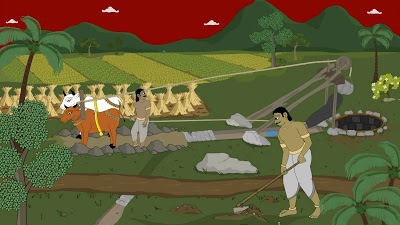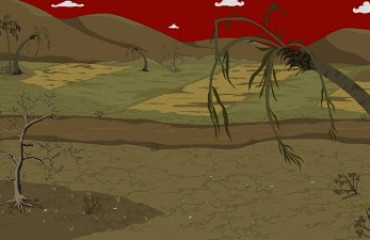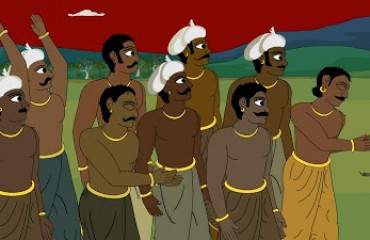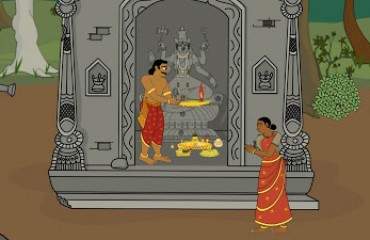HOW DOES A TRADITIONAL WELL-AND-BULLOCK IRRIGATION SYSTEM WORK?

This Legend of Ponnivala video clip is presented primarily to show and discuss a very unique traditional irrigation system used (as far as I know) only in the Kongu area of Tamilnadu, India.
But first I want to say a few words about the perennial challenge of providing water to crops in this basically very dry, upland region of Tamilnadu. In early times the people living in the Kongu area were able to manage their crop regimes by depending only on very intermittent rains. They were successful in this for multiple reasons. For one, their agricultural activities were only part time and were liekly carried out with just a hoe and a planting stick. Few large areas had yet been cleared of trees and that newly exposed earth further broken up using a plough. Both activities, of course, cause the soil to dry out under India’s generally hot sun. Also, the crops were different in earlier times. Most people grew mainly millets plus (sometimes) a hardy type of maize. Both types of crops were highly drought-resistant. Hence, in the early days, the lands of the Kongu area retained much more moisture than they do today.
Click here for more information.


